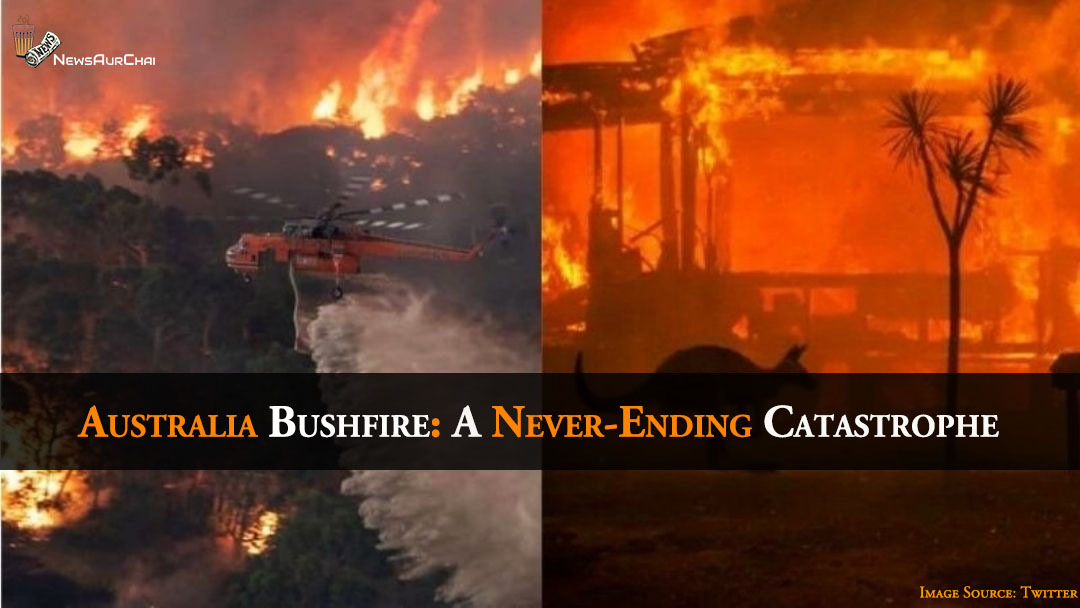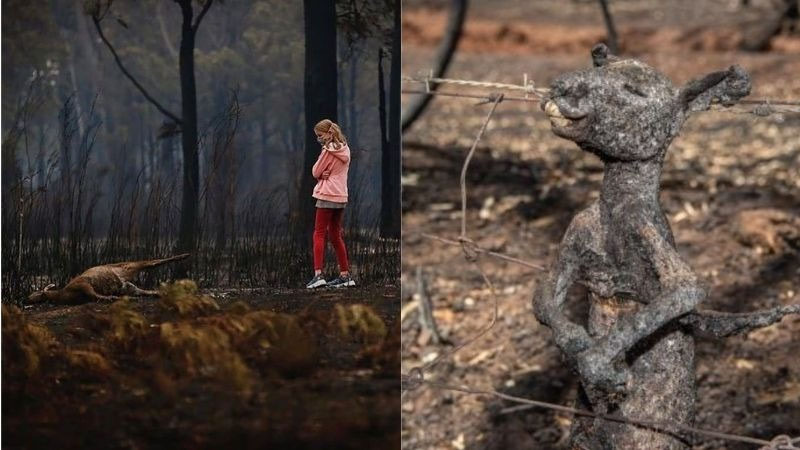
Since September 2019, Australia has been facing a never-ending, raging wildfire in several regions. Fires heavily impacted various areas of the state of New South Wales, such as the North Coast, Mid North Coast, the Hunter Region, the Hawkesbury as well as Wollondilly in Sydney’s far west, the Blue Mountains, Illawarra and South Coast. Before the fires emerged from the forest in late December, large areas of forests of Eastern and Northeastern Victoria burnt out of control for four weeks. Lives were taken, tons were threatened, and Corryong and Mallacoota were isolated due to the fires in late December. Catastrophic fire danger was declared in the Greater Sydney region, on November 12, 2019. This happened for the first time since the introduction of this level in 2009.
After the country entered summer in December and rain has been scarce since then, it has worsened the situation. The bushfire season 2019-20 of Australia has had fatal consequences and has led to relentless destruction. It has been referred to as the worst bushfires to have taken place till date. It has managed to burn 6.3 million hectares, killed 25 people, with a further six missing in the state of Victoria, and destroyed over 2500 buildings as of January 5, 2020. An estimate of half a billion (480 million) animals have been killed due to the continual fires.
The crisis in Australia did not stay only within its boundaries; it had international effects as well. On January 1, 2020, the smoke cloud covered the whole of the South Island in NewZealand, which was, however, dissolution by the winds from the Pacific Ocean. On January 5, 2020, a massive layer of smoke entered the North Island, which turned the sky orange in Auckland.
The Australian Defence Force (ADF) initiated ‘Operation Bushfire Assist’ to support state fire services with the creation of Joint Task Force 646 and Joint task force 1110 on December 5, 2019. As part of ADF’s operation helicopters are being used for fire mapping, to search for isolated persons, use of various defence facilities as coordination and information centres also for catering and accommodation for firefighters. It is acting as a liaison between state and federal government services, reloading and refuelling for water-bombing aircraft, transport and logistics for firefighting equipment and personnel. The deployment of personnel to assess fire damage and severity, provision of humanitarian supplies, and evacuation of civilians from high-risk areas are some of the task taken up by ADF.

International Support:
Canadian, New Zealanders and the United States personnel were deployed in Australia to help and support during this crisis. Many people internationally supported and grieved for Australians on social media. Pink, an American singer, donated US$500,00 to support local fire fighting authorities in Australia on January 4, 2020.
Current Situation and Predictions:
January 4 was a day of high tension as soaring temperatures, and strong winds fanned fires in New South Wales, Victoria and South Australia, forcing thousands to flee and bringing flames to the suburban fringes of Sydney. Many firefighters fought to restrain the inferno, but many still burned out of control. Sooty rain fell down the east coast, from Sydney to Melbourne, with “torrential” rain reported in some parts of New South Wales (NSW). However, milder temperatures on January 5 brought hope of a respite from wildfires that have ravaged the Australian states.
Nevertheless, the weather forecast report states that there is an indication of incoming storms, but of the worst possible kind. These storms are expected to bring gusty winds instead of rain, that would aggravate the current situation. Wind remains one of the greatest threats while fires rage in Australia, with strong gusts of up to 80mph recorded in the country capable of pushing them further afield. As per the reports, the officials have now said that the temperature is expected to rise by Thursday and also huge fires in Victoria and New South Wales could meet to create a larger “mega blaze” in the upcoming days.
As per the reports on January 6, 2020, there is only around 10km between a blaze in Victoria’s Corryong and two burning at Kosciuszko National Park in NSW. Meanwhile, Prime Minister Scott Morrison announced more than A$100,000 will be released for disaster relief – while A$2bn would be committed to recovery over the next two years.





